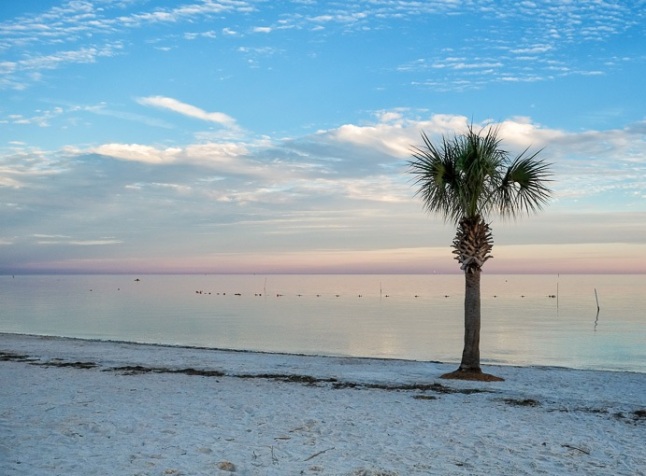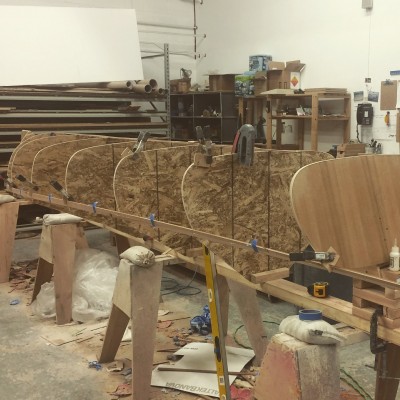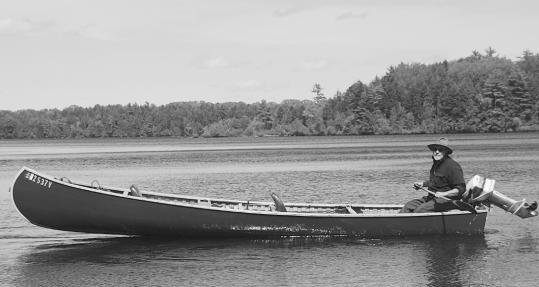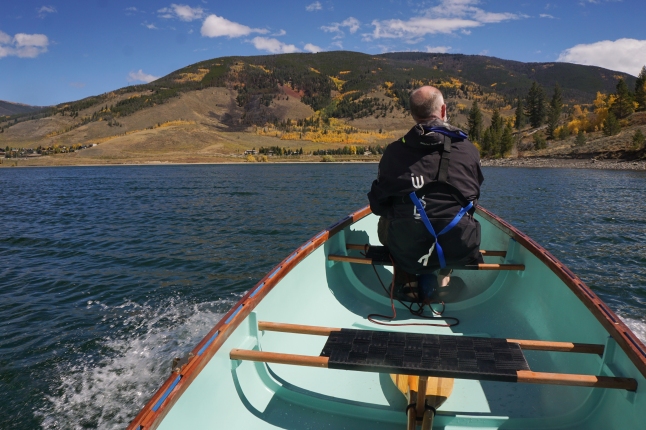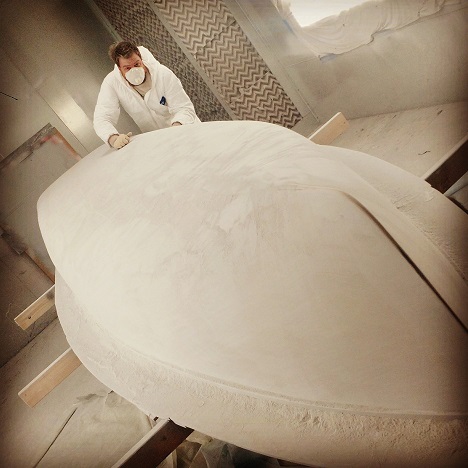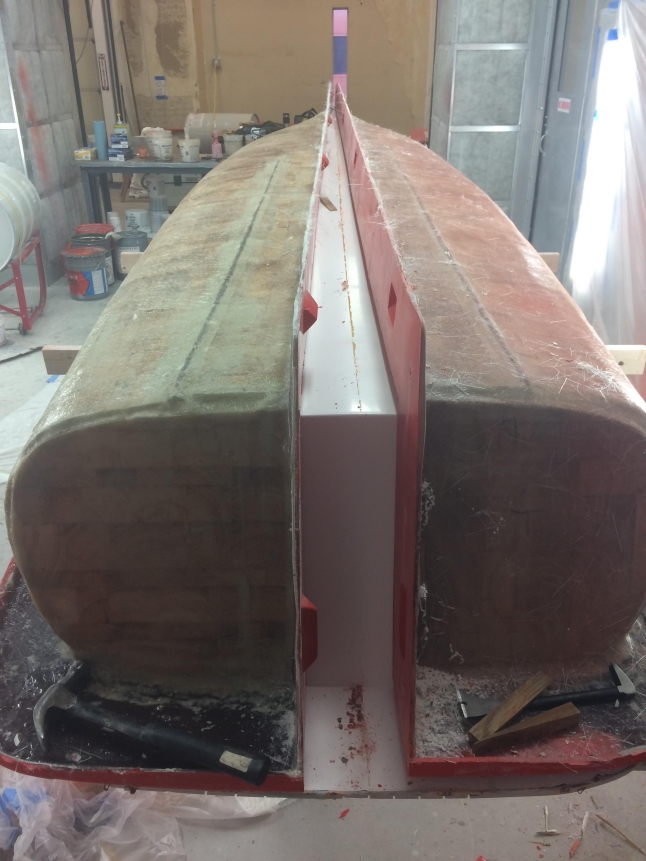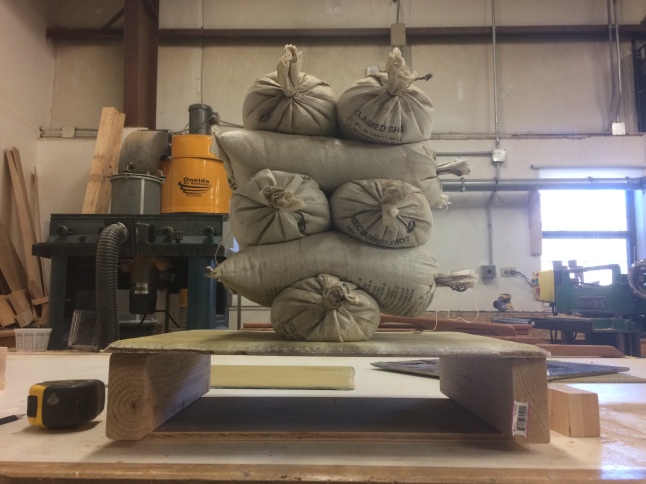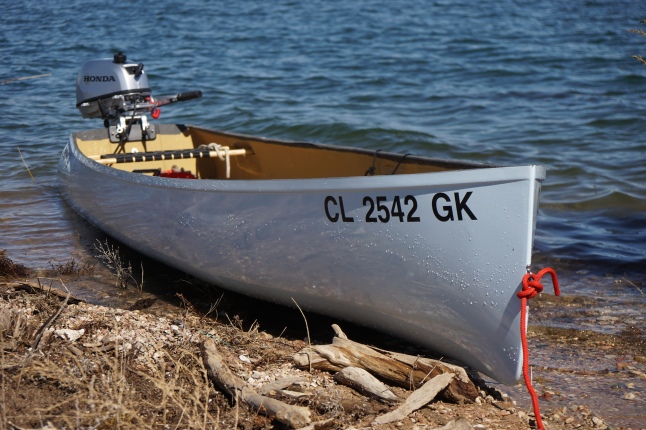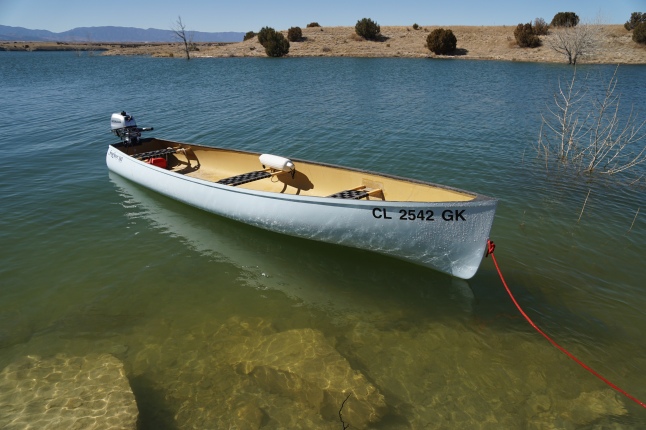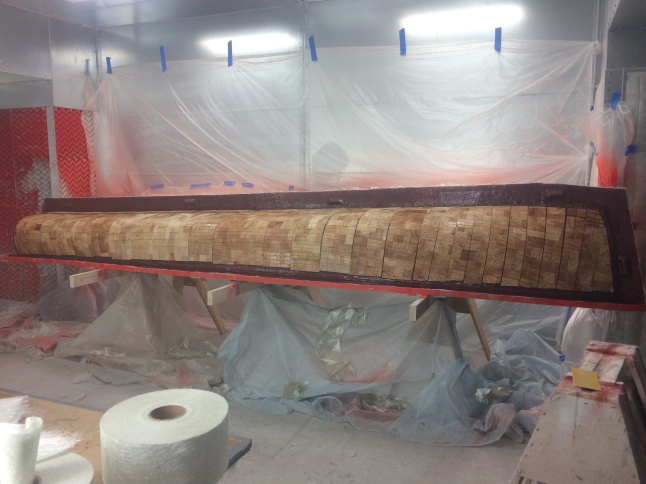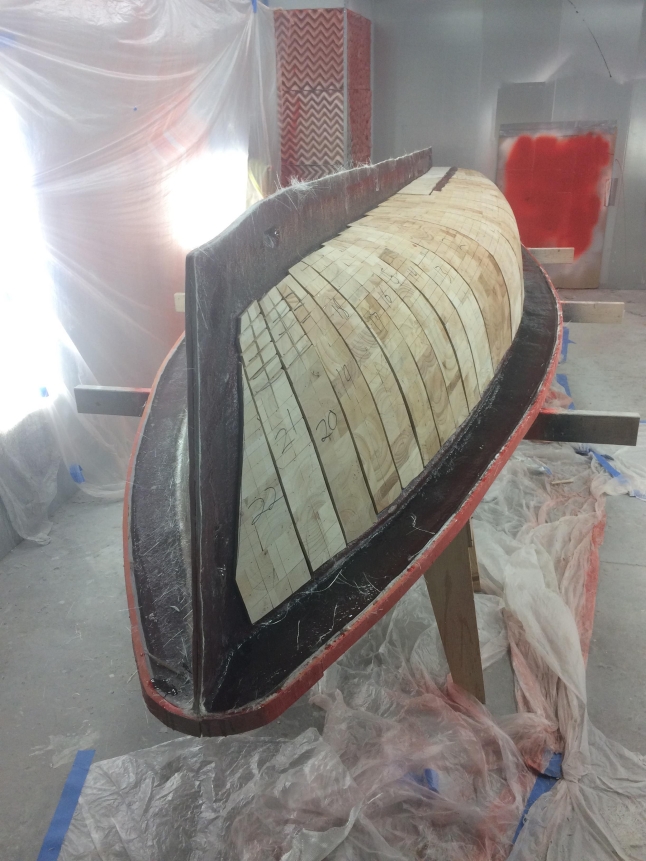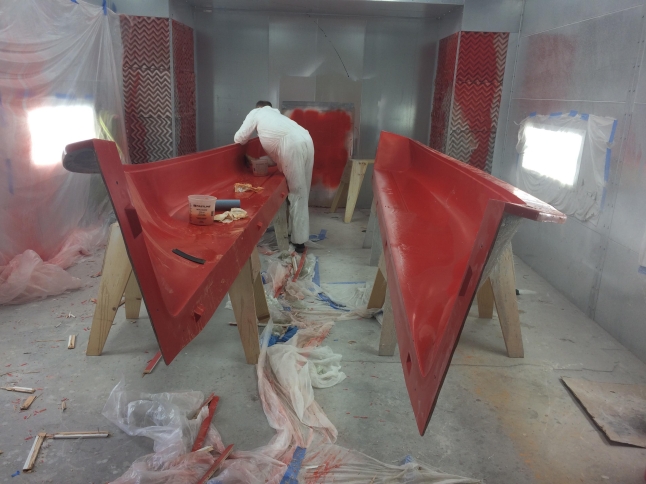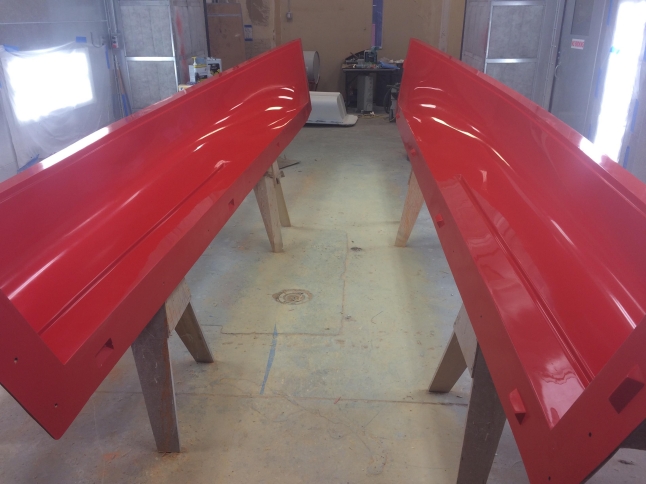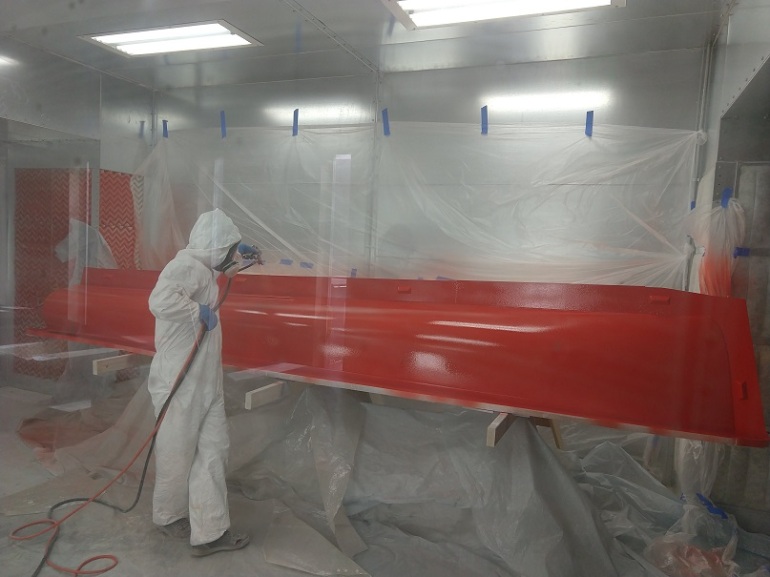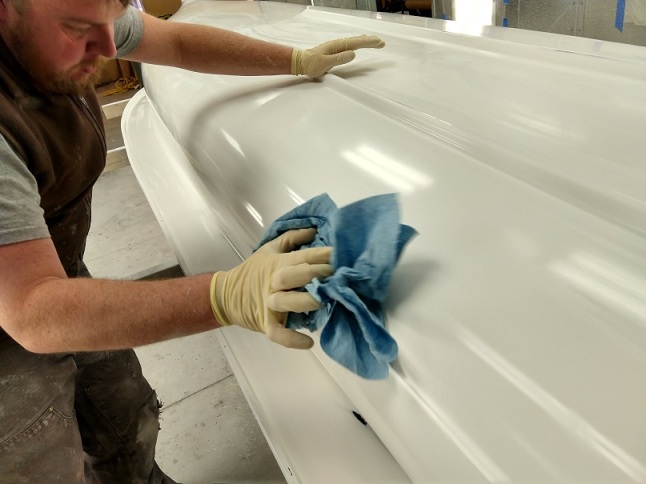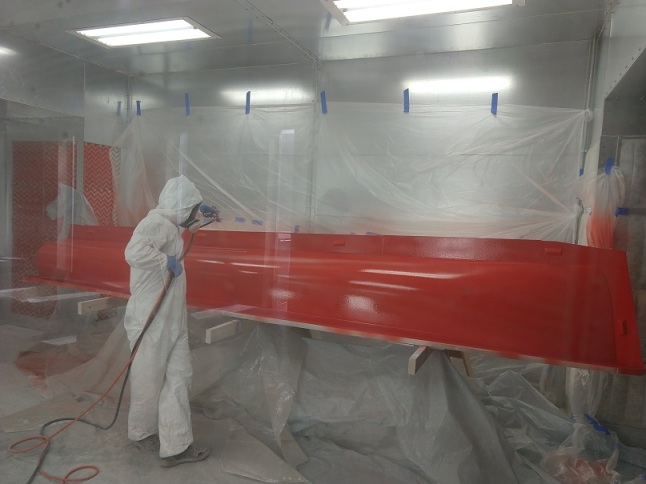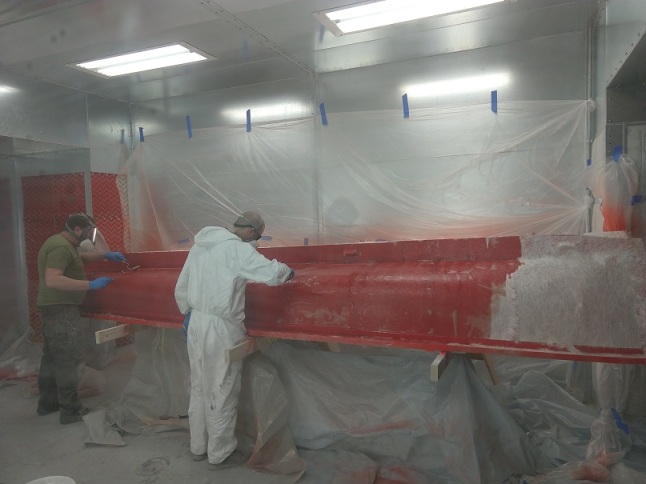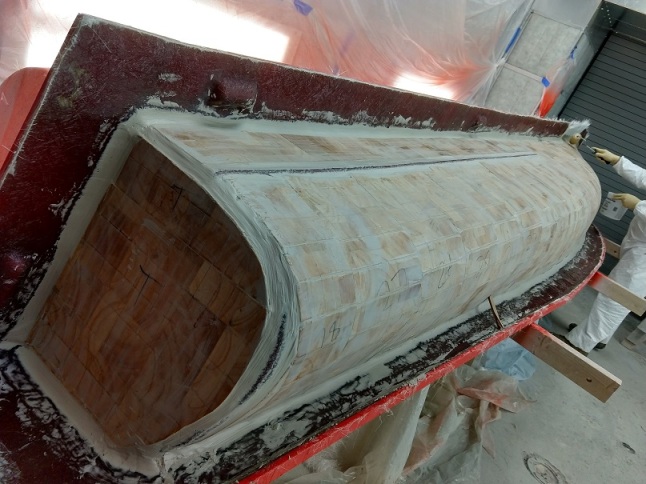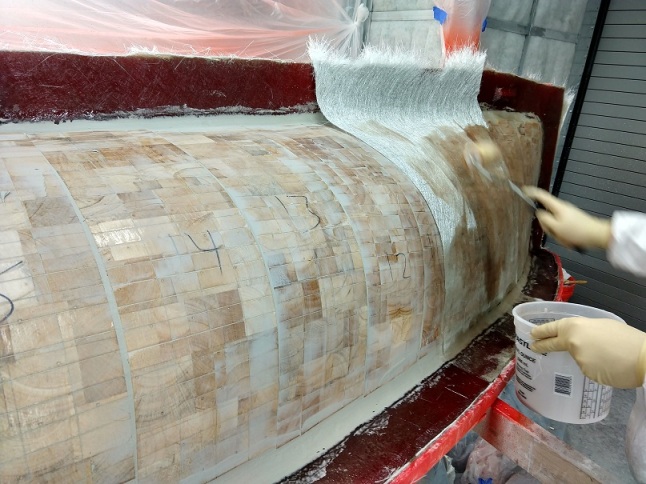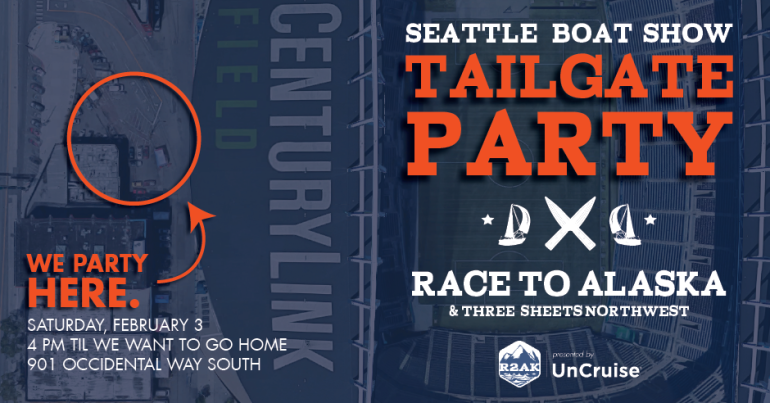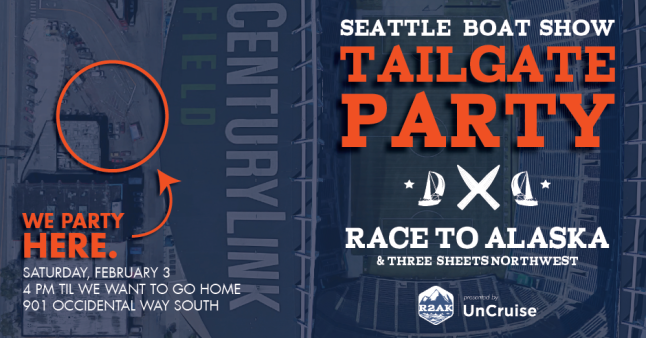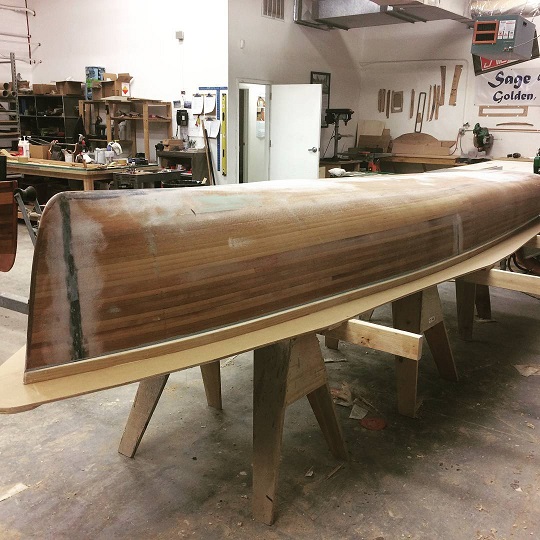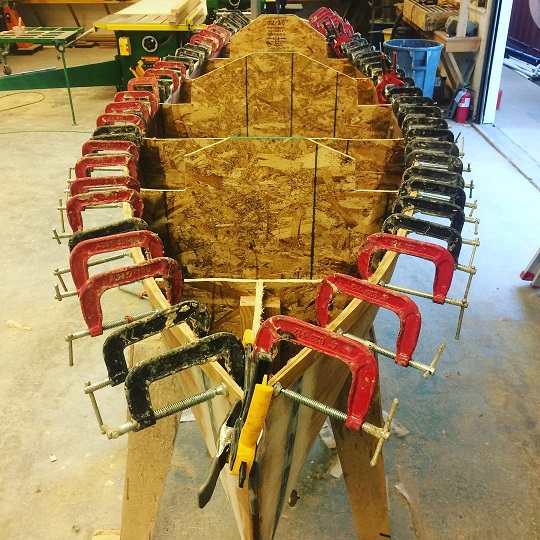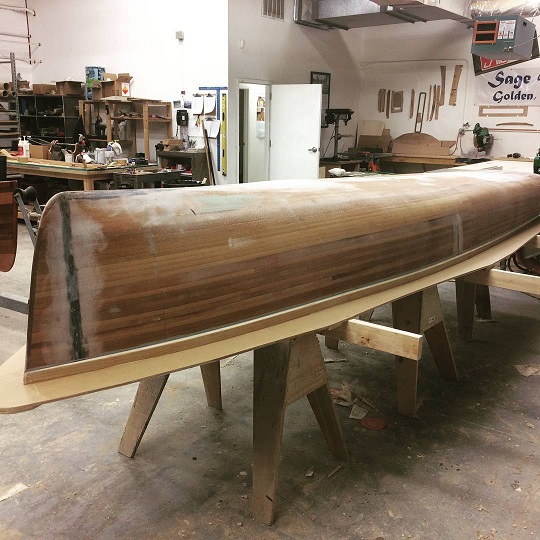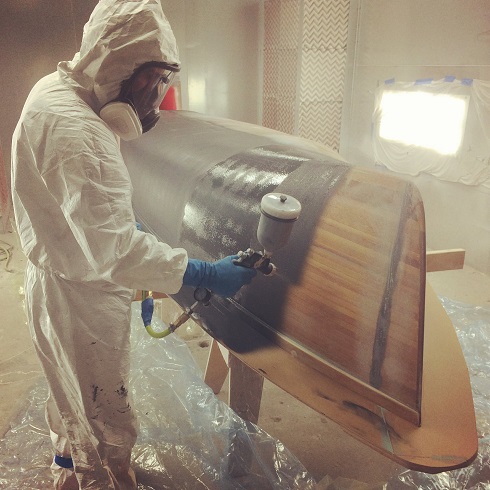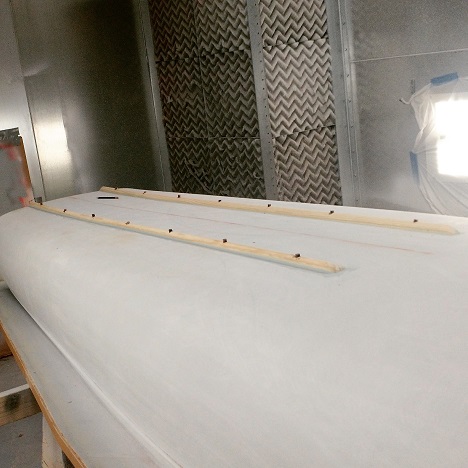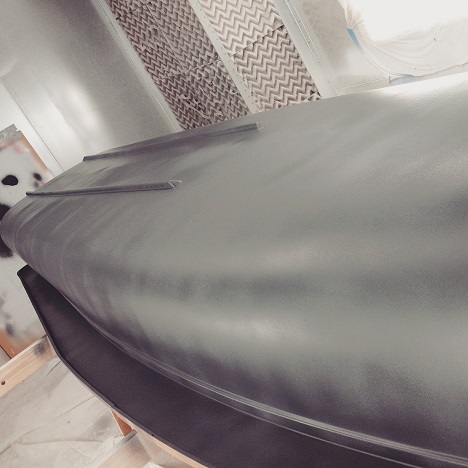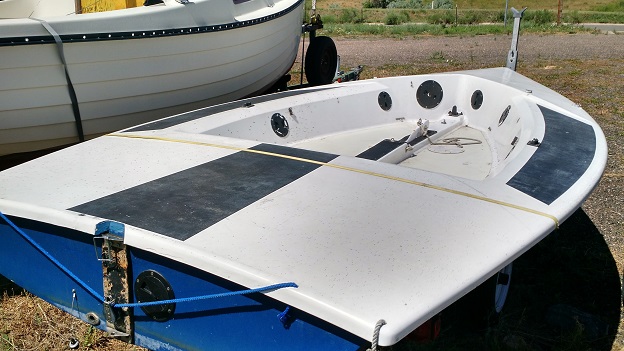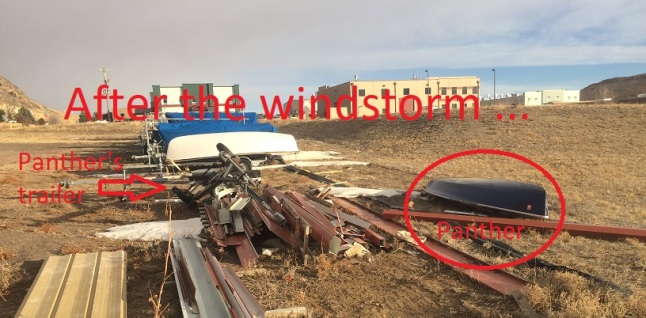Hello, Greg the boat builder here, and let me tell you that Florida is a long way from Colorado. But, in the search of warm weather and like minded boat folk, the 4500 mile round trip was absolutely worth it. My set up was simple, I loaded up the shop truck with The our original wooden prototype up on the roof rack for use in Cedar key, and the newest composite prototype would get put on the trailer so it could be launched and retrieved easier by one person along the way. The two outboards and all the gear was kept under cover until the boats got in the water. 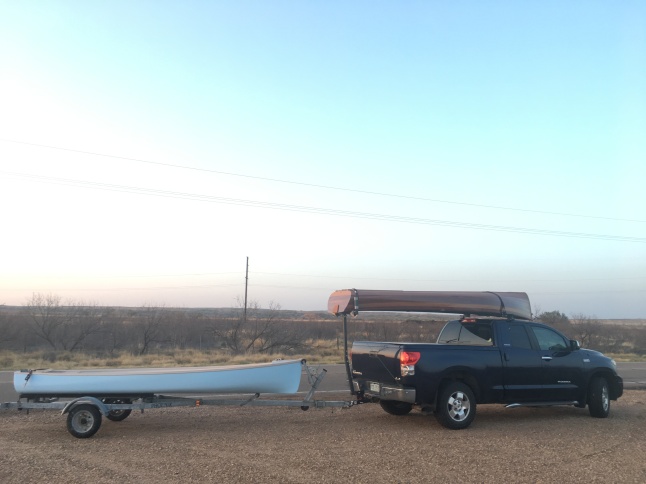
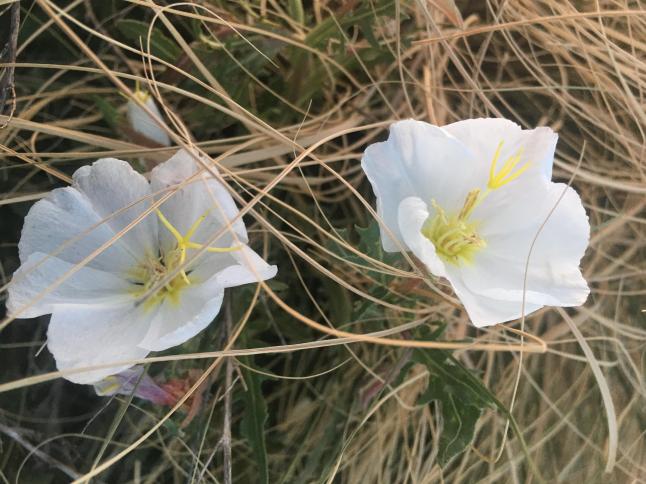
After a straight shot almost 1000 miles due south through the dry lands of southern Colorado and west Texas, the boats, my dog Samson, and I ended up in the San Antonio area with some friends. The lake country between there and Austin provided a chance to finally get this boat in the water.
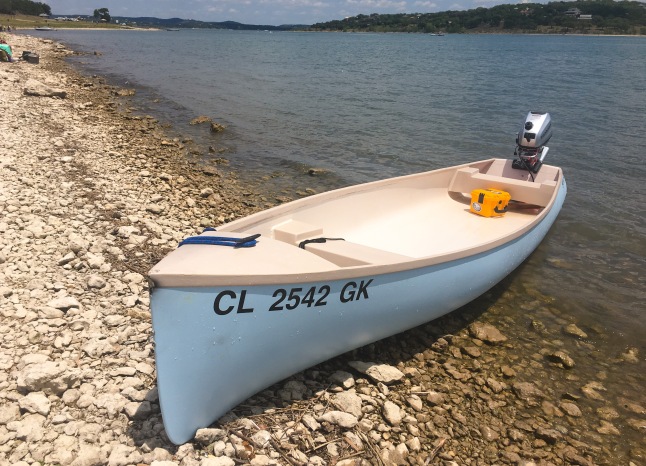 Canyon lake, a damned portion of the Guadalupe river, was out first stop. With breezy weather and a fair amount of weekend boat traffic to play around in I found a few things about our new prototype. As you can see above, the current boat has molded seats with plenty of floatation, as does the forward deck area. Between this and the foam core in the hull, transom and gunnells, the boat should be un-sinkable. We will be testing that in the near future so stay tuned. The current interior lay out also has a water tight hatch on the aft side of the for deck that has a surprising amount of handy storage. Its large enough to fit dock lines and a set of smaller fenders.
Canyon lake, a damned portion of the Guadalupe river, was out first stop. With breezy weather and a fair amount of weekend boat traffic to play around in I found a few things about our new prototype. As you can see above, the current boat has molded seats with plenty of floatation, as does the forward deck area. Between this and the foam core in the hull, transom and gunnells, the boat should be un-sinkable. We will be testing that in the near future so stay tuned. The current interior lay out also has a water tight hatch on the aft side of the for deck that has a surprising amount of handy storage. Its large enough to fit dock lines and a set of smaller fenders.
The SageSport160 was running a Honda 5hp for this trip. Properly trimmed (with two people and a good sized dog) it would cruise at 15mph with out issue on flat water. When the wind waves got a bit rough later in the afternoon I found that 1/2 throttle gave me a very steady and comfortable 8mph with out the need for any wave compensation. There was no pounding and the boat took everything with an easy roll.
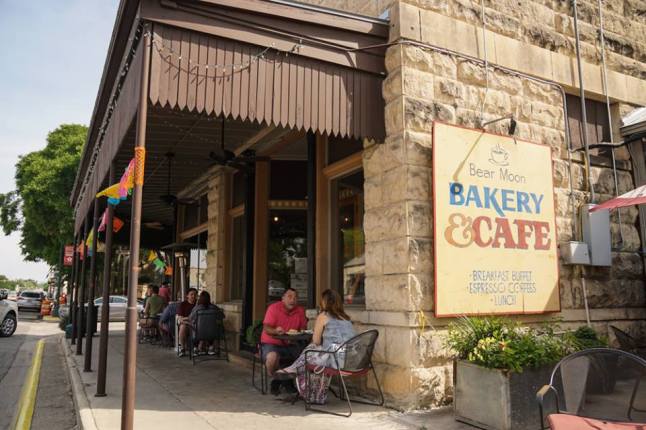
After Breakfast at the fantastic Bear moon bakery, we loaded up and headed east along the gulf (There are no photos of this section due to a camera malfunction) to the Sabine pass area. This is the boarder between Texas and Louisiana. The real beginning of Bayou country. Sabine pass has the significant commercial town of Port Arthur. After putting the Sagesport 160 in the water at Walter Umphrey state park I found it a little daunting to be sharing the lane with commercial ships while I ran out into the open Gulf and headed west along the beaches of Sea rim State park. Weather was flat and glassy and it was great to have a wide open salt water run up the coast. Despite being so close to Houston Tx I didn’t see a soul for miles. Coming back I found my way through some of the brackish swamps, small lakes, and cut channels that make up this part of the coast.
The total distance of this trip and the time constraints I had started to press on me that I needed to make some miles, So I loaded up and headed out on the long run to the east coast of Florida and my old home town of Flagler beach. Gamble Rodgers State park FL has always been a favorite of mine since it is one of the rare places on the east coast of florida you can camp just about right on the beach. Its also less than a couple hundred yards to a ramp on the Inter-coastal waterway part of the Halifax river.
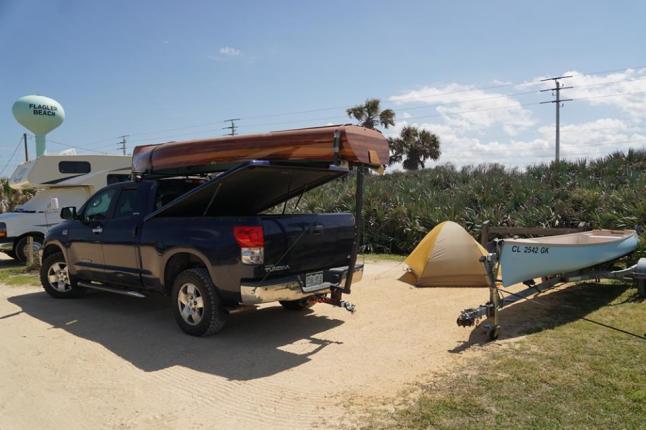
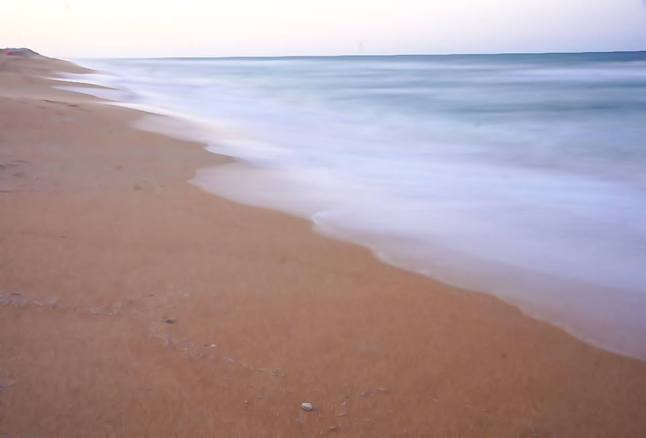
I didn’t get much time on the boat in Flagler except a short sunset cruise around the marshes before the mosquito’s drove me back to the ramp. At least the salt breeze in camp kept them at bay.
After two days of persistent strong sea conditions precluded me from having any off shore testing in Flagler, I settled on a run up the gin clear waters of the Silver River. Only an hour and a half drive inland (and half way to cedar key)I reached the Lilly choked backwater where I put into the Silver. The Silver River is a spring run the emanates from a single artesian spring (silver glen spring) that flows at a river creating 700+ cubic feet of water per second. This great flow of perfectly clear 72 degree water creates a 5 mile long ecosystem all to its own before emptying into Ocklawaha river. Motors are allowed all the way to the spring, but only at a no wake speeds. The Honda 5 is surprisingly quite at idle, enough to hear the prolific bird life on this stretch of the river
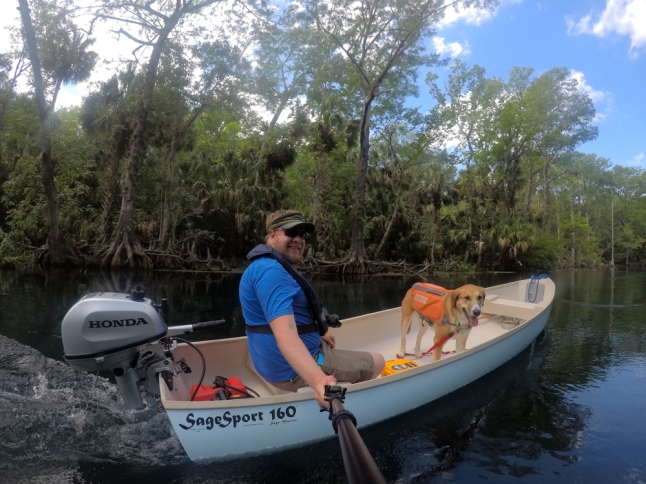
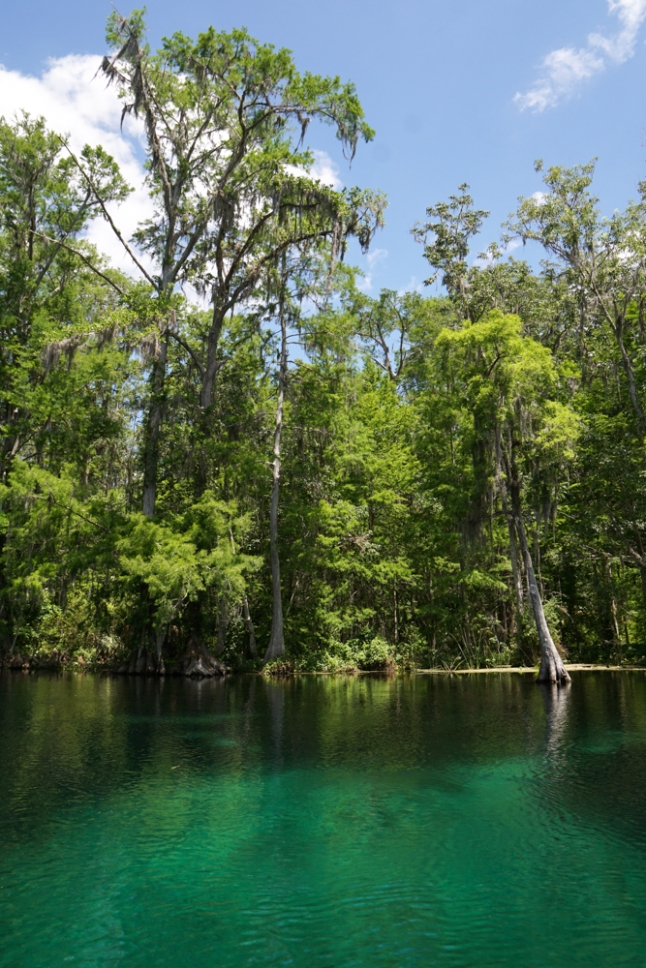
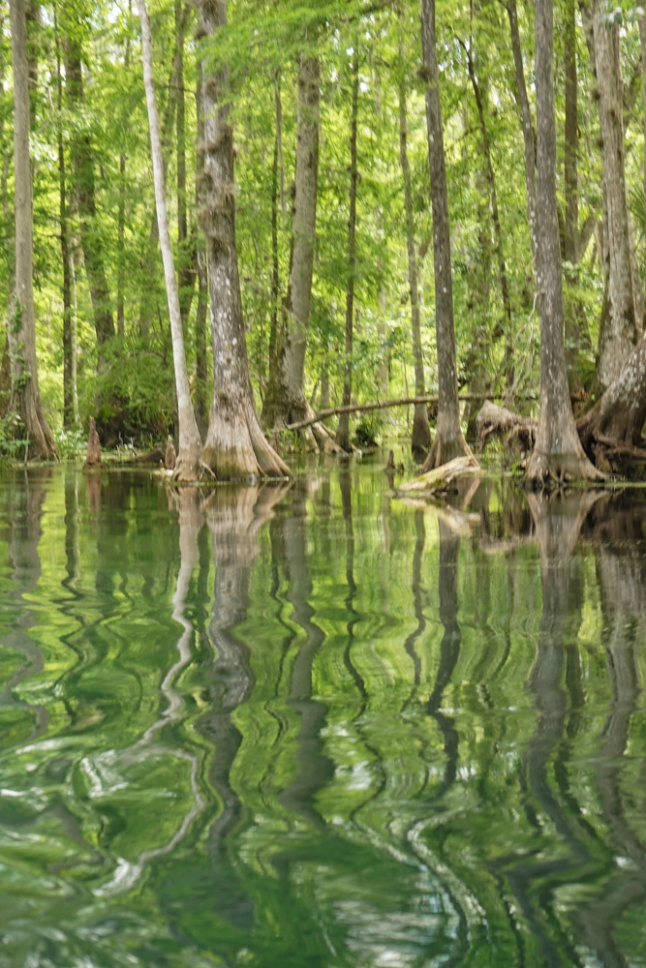
After a memorizing trip like this I was once again ready for some salt water. Showing up at Cedar key a day before the event has many advantages, such as uncrowded ramps and places to park a trailer. It also allows some more wide open testing in the mixed conditions of the gulf. Sal and Gail glesser (Owners of Sage Marine and the knife company Spyderco) Joined me for a couple days during the event. This was the first opportunity for them to try out the new Sagesport 160
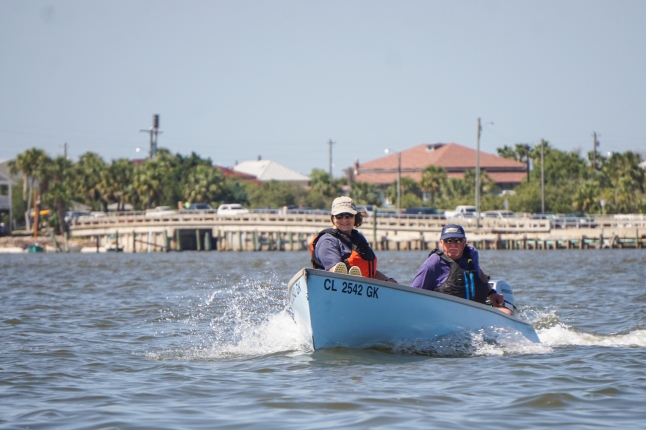
Trimming the boat is important for getting everything out of her performance. Running with a single person in the boat make her a bit tail heavy. Adding 100lbs of sand bags into the bow makes the boat trim out very well when running single. Robb originally had a 5 gallon bucket that he would fill with water, cover, and leave in the bow when going out alone. I wouldn’t call the boat tender, but small changes in weight distribution do change the trim of the boat. With two aboard she plains out very nicely.
Sal and Gail took the composite prototype on a very extended test when they missed the entrance to the bay between a couple of islands. The 20 or so miles they went north was a great test to the boat before breaking out a GPS that reminded them the way home. During that time they found a couple of oyster bars and some more off shore conditions. Despite all that the boat preformed better than they could have hoped, delivering a comfortable stable ride and very good fuel consumption. Including the 3 hour jaunt up the coast they burned about 1/2 of a three gallon tank all weekend.
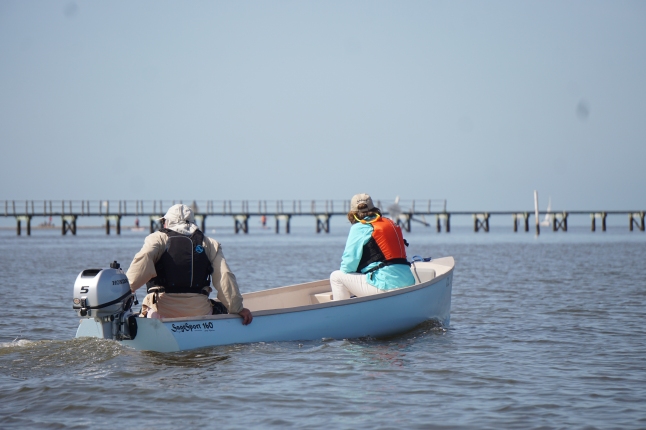
With the wooden boat at hand I tested the higher speed handling with a 6hp Mercury outboard. High speed cornering felt stable on flat water and I never shipped any water over the back end no matter what I did. The boat handled the larger wakes of the local fishing boats with glee, jumping up over the waves with almost no pounding when coming down.
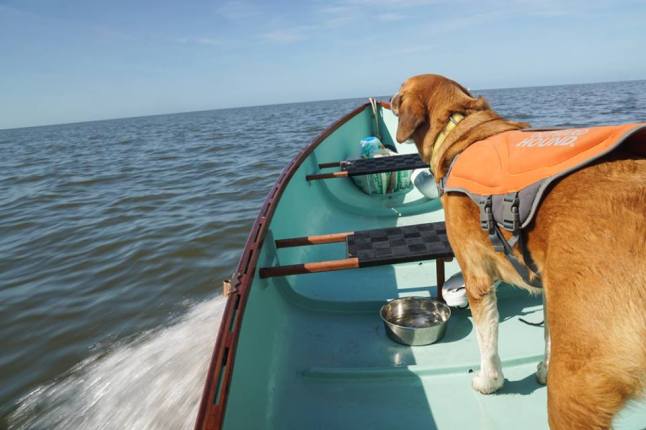
Wide open at 18 mph, the horizon looks like it could be close.
In this part of the world the warmth of the day comes on quickly, So as the days of the event started there were many boats in the water early. I had started pretty early myself and spotted a familiar boat, when I got close enough I realized it was Wes White (Robb’s son) in his dads original prototype. We beached up and spent some time discussing boats while looking at the increasing amount of interesting boats coming our way.
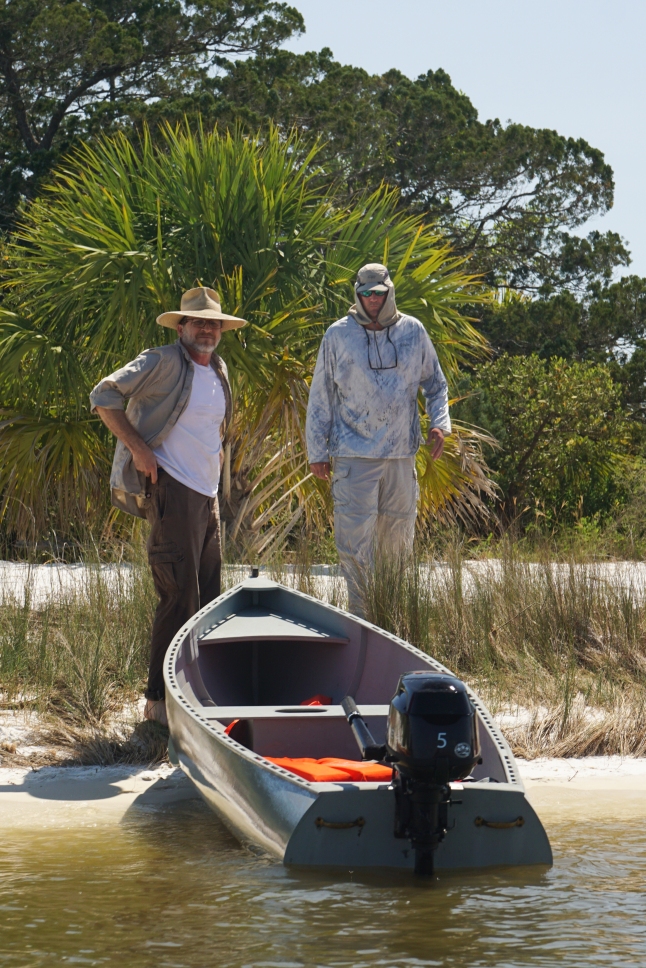
that’s Wes on the left with Robb’s Original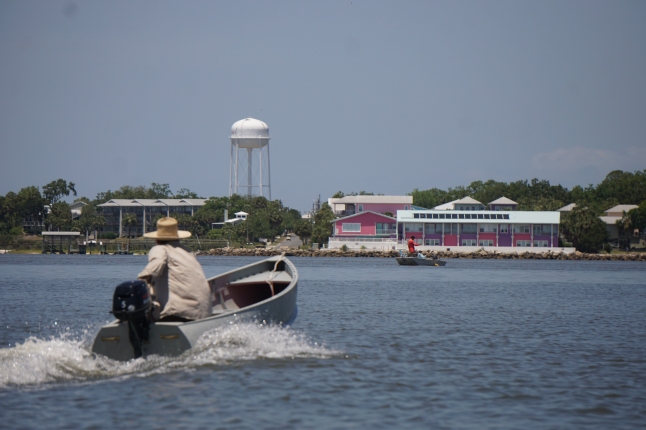
For this boat builder Cedar key is a great time to see other designs on and off the water. The reason for coming here was not just to show off the new Sage, but to be more of a part of the boat community and see what she has to offer. Even Samson seemed to like looking at the boats
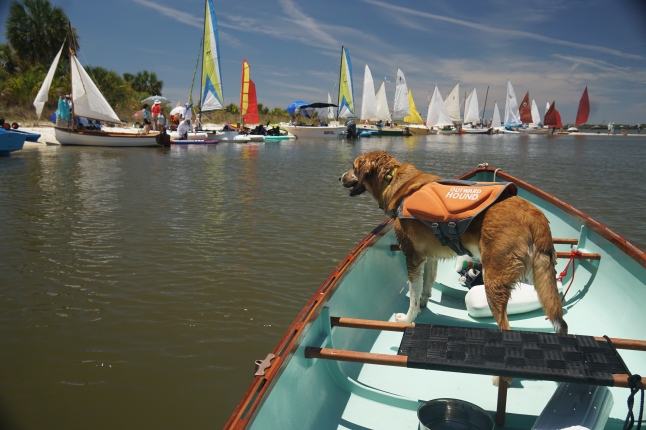
Here are just some of the beauties the showed up this year.
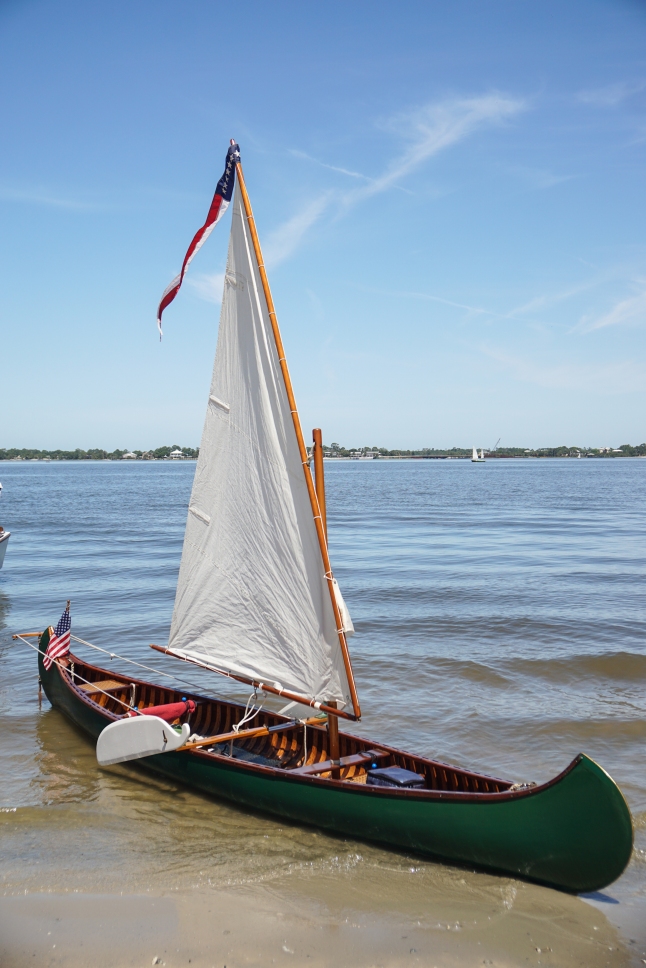
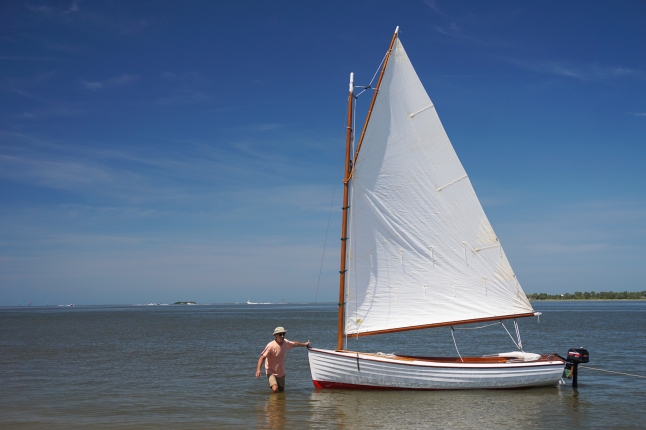
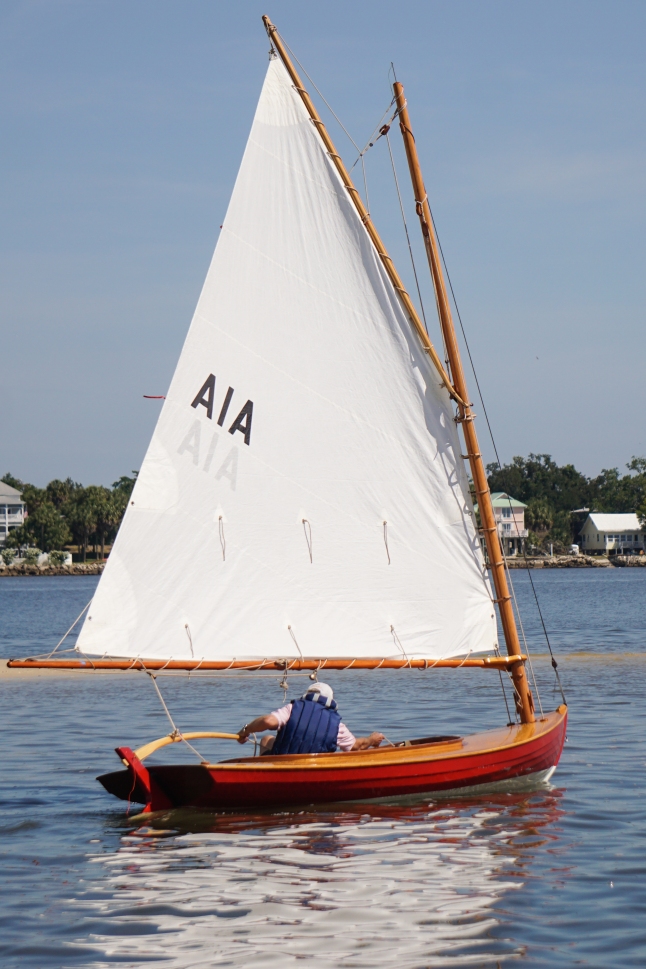
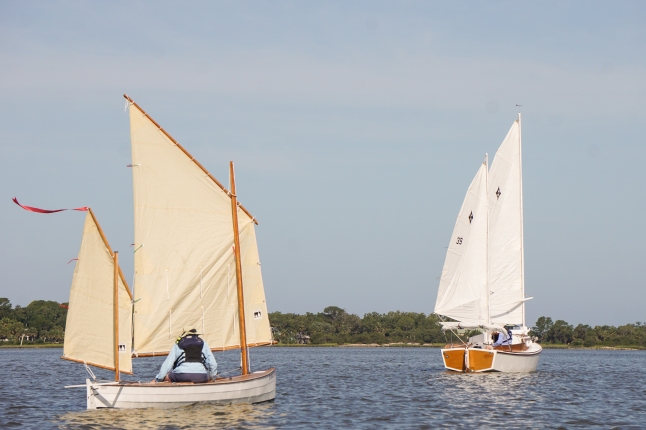
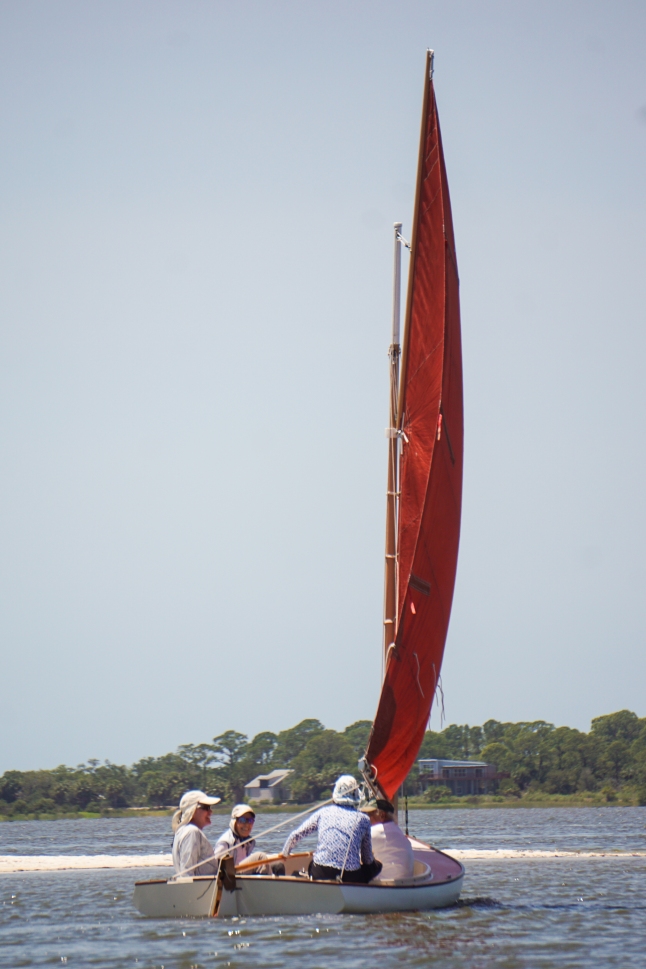
While spending time on the beach I had another opportunity to test the design of the Sagesport 160 when some friends showed up wanting a ride. So we packed 4 adults and one 75lb dog in for a trip around the island. The boat displaced about 2 more inches than when riding solo, but had plenty of free board when you figure she had about 1100lbs in total boat/engine/cargo weight. Not bad for an 80lb boat. That being said, suggested capacity is no more than 650lbs. The 6hp just couldn’t quite get us all onto plane. 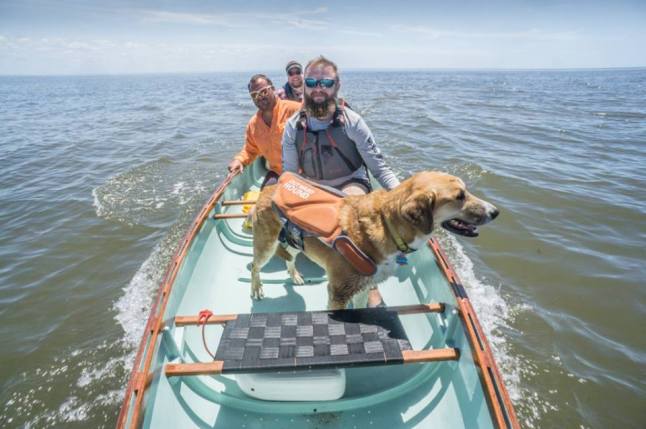
One of the best parts of the trip for me was having all the Rob White designed sport boats sitting next to each other showing the evolution of the design. The closest is our new Composite version (prototype). Its a burly boat that you don’t mind running up onto the sand, and with more flotation and storage than the originals I think its destined to be one popular boat, and yes there will be a middle seat. 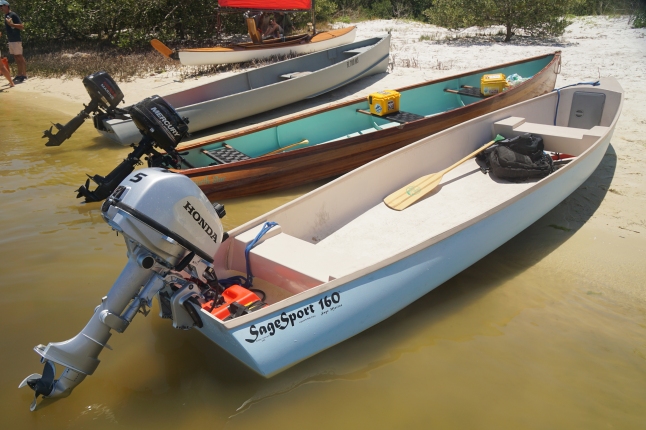
Once the event was done I booked it back to Colorado to keep working on the layup design. We are finishing up prototyping the hull now and beginning to put more effort into the interior options. The production SageSport 160 should be available this summer.
One last parting image, Where will your Sage take you?
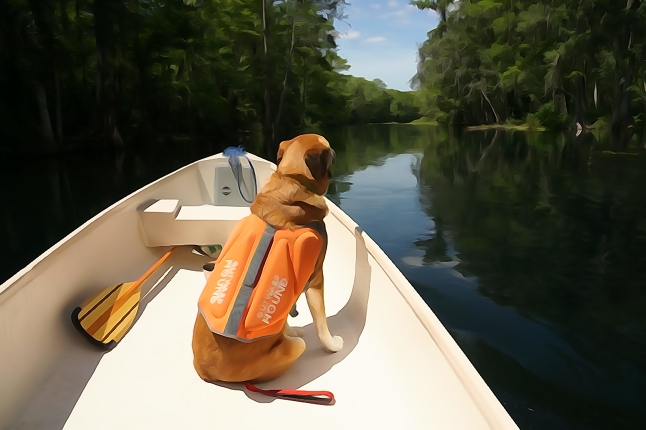
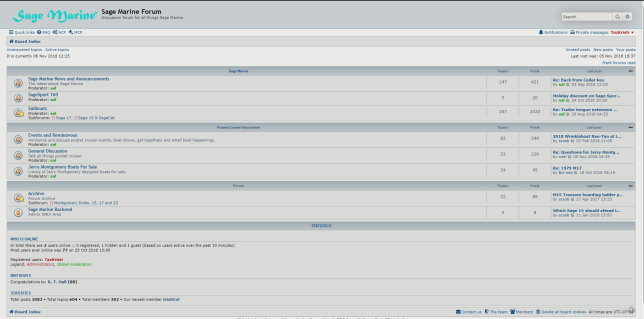
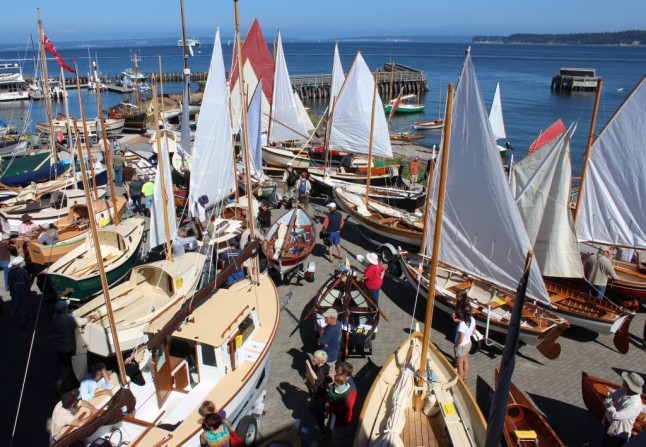


 Canyon lake, a damned portion of the Guadalupe river, was out first stop. With breezy weather and a fair amount of weekend boat traffic to play around in I found a few things about our new prototype. As you can see above, the current boat has molded seats with plenty of floatation, as does the forward deck area. Between this and the foam core in the hull, transom and gunnells, the boat should be un-sinkable. We will be testing that in the near future so stay tuned. The current interior lay out also has a water tight hatch on the aft side of the for deck that has a surprising amount of handy storage. Its large enough to fit dock lines and a set of smaller fenders.
Canyon lake, a damned portion of the Guadalupe river, was out first stop. With breezy weather and a fair amount of weekend boat traffic to play around in I found a few things about our new prototype. As you can see above, the current boat has molded seats with plenty of floatation, as does the forward deck area. Between this and the foam core in the hull, transom and gunnells, the boat should be un-sinkable. We will be testing that in the near future so stay tuned. The current interior lay out also has a water tight hatch on the aft side of the for deck that has a surprising amount of handy storage. Its large enough to fit dock lines and a set of smaller fenders.



















